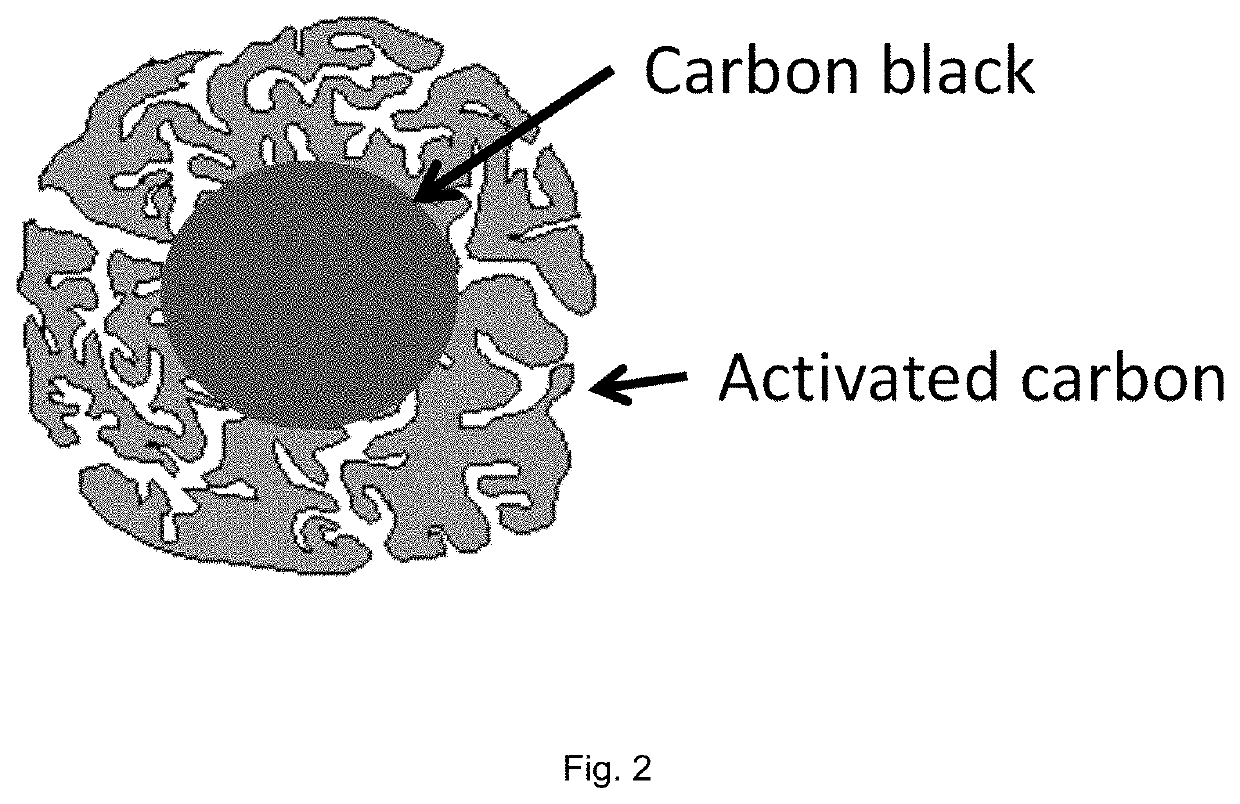Conductive matrix and sulfur composite
a technology which is applied in the field of conductive matrix and sulfur composite, can solve the problems of limited cycle life, poor cycle life, and prevented li—s batteries from becoming commercially viable, and achieve high porosity, high electrical conductivity, and high packing
- Summary
- Abstract
- Description
- Claims
- Application Information
AI Technical Summary
Benefits of technology
Problems solved by technology
Method used
Image
Examples
Embodiment Construction
[0032]The present invention provides mesoporous carbons (pores 2-100 nm) that function as the matrix for sulfur and polysulfides in cathodes for lithium-sulfur batteries. The carbons were derived from carbohydrates and carbon black. We can incorporate elements such as nitrogen, sulfur, phosphorous and others into carbohydrate-derived carbons. This is done by adding compounds with the desired element to the mixture before carbonization. The elements are bound tightly into the activated carbon and cannot be easily removed. These carbons coat the carbon black which increases the electrical conductivity of the carbons.
[0033]The key advantages of our carbon technology are low cost and high purity and most importantly, our ability to tailor the pore size; these advantages stem directly from our use of refined sugar precursors. The invention uses carbons based on refined sugars, such as sucrose or high fructose corn syrup, because the resulting carbons have the high intrinsic purity needed...
PUM
| Property | Measurement | Unit |
|---|---|---|
| packing density | aaaaa | aaaaa |
| electrical conductivity | aaaaa | aaaaa |
| packing density | aaaaa | aaaaa |
Abstract
Description
Claims
Application Information
 Login to View More
Login to View More - R&D
- Intellectual Property
- Life Sciences
- Materials
- Tech Scout
- Unparalleled Data Quality
- Higher Quality Content
- 60% Fewer Hallucinations
Browse by: Latest US Patents, China's latest patents, Technical Efficacy Thesaurus, Application Domain, Technology Topic, Popular Technical Reports.
© 2025 PatSnap. All rights reserved.Legal|Privacy policy|Modern Slavery Act Transparency Statement|Sitemap|About US| Contact US: help@patsnap.com



